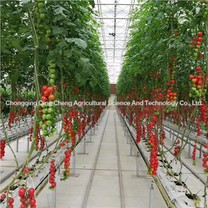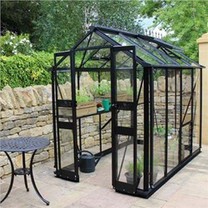The principle of thermal insulation of glass greenhouses turns out to be like this
A glass greenhouse refers to a greenhouse with glass as a covering material, which belongs to a greenhouse using glass as a covering material. In cultivation facilities, glass greenhouses, as a form of longer service life, are suitable for various regions and climatic conditions. According to the size of the span and spacing, it is divided into different modes. It is also divided into vegetable greenhouse ecological greenhouse, scientific research greenhouse and three-dimensional greenhouse, leisure greenhouse, etc.
The area and usage of the glass greenhouse can be freely allocated by the greenhouse, the small courtyard is leisure style, the large courtyard is 10 meters high, 16 meters span, 10 meters bay, intelligent one-key control. In the greenhouse of the greenhouse, various heating methods can be used for heating in winter, and the energy consumption cost is in the middle, which is acceptable to ordinary people.
According to the principle of greenhouse insulation, solar radiation is mainly short-wave radiation, which enters the greenhouse through greenhouse lighting materials, causing the indoor ground temperature and air temperature to rise, turning into long-wave radiation. Long-wave radiation is blocked by greenhouse covering materials, causing indoor heat to accumulate and indoor temperatures to rise. In the cold season when crops in the greenhouse are not suitable for outdoor growth, an environment suitable for crop growth is created by increasing the indoor temperature, so as to achieve the purpose of off-season crop production and increase crop yield.
Introduction to the principle of thermal insulation of glass greenhouses:
1. Greenhouse is a process of collecting and slowly releasing the heat energy brought by solar radiation. When the sun comes out, a lot of solar radiation will enter the interior of the greenhouse. However, for longwave radiation on the ground, the opposite is true for glass greenhouses. In this way, sunlight and heat can enter into its interior in large quantities, but cannot go out easily and dissipate relatively slowly. In this way, it will serve as insulation and at the same time, it can be used by the plants inside.
2. In simple terms, sunlight will enter its interior through the film and glass, and then the heat will be sealed in its interior space. At the same time, it varies with the intensity and time of sunlight. At the same time, since the ground itself is a heat storage material, its temperature is not easily released, so there is such a constant temperature environment.
The design and production principle of the greenhouse is basically the same as that of atmospheric heating. For solar radiation, glass greenhouses and glass are almost "transparent", allowing most of the solar radiation to enter. But for ground-based long-wave radiation, neither the greenhouse nor the glass is "transparent", and long-wave radiation rarely penetrates.








